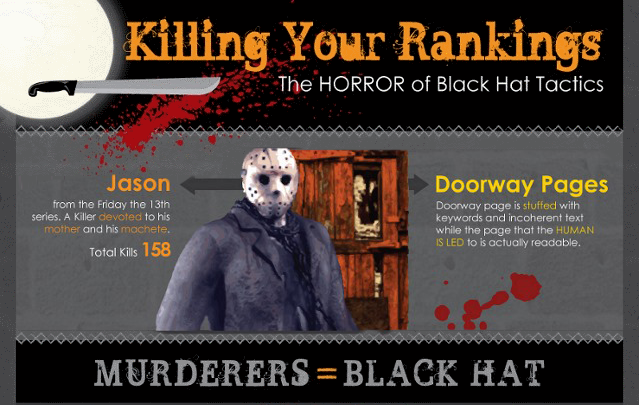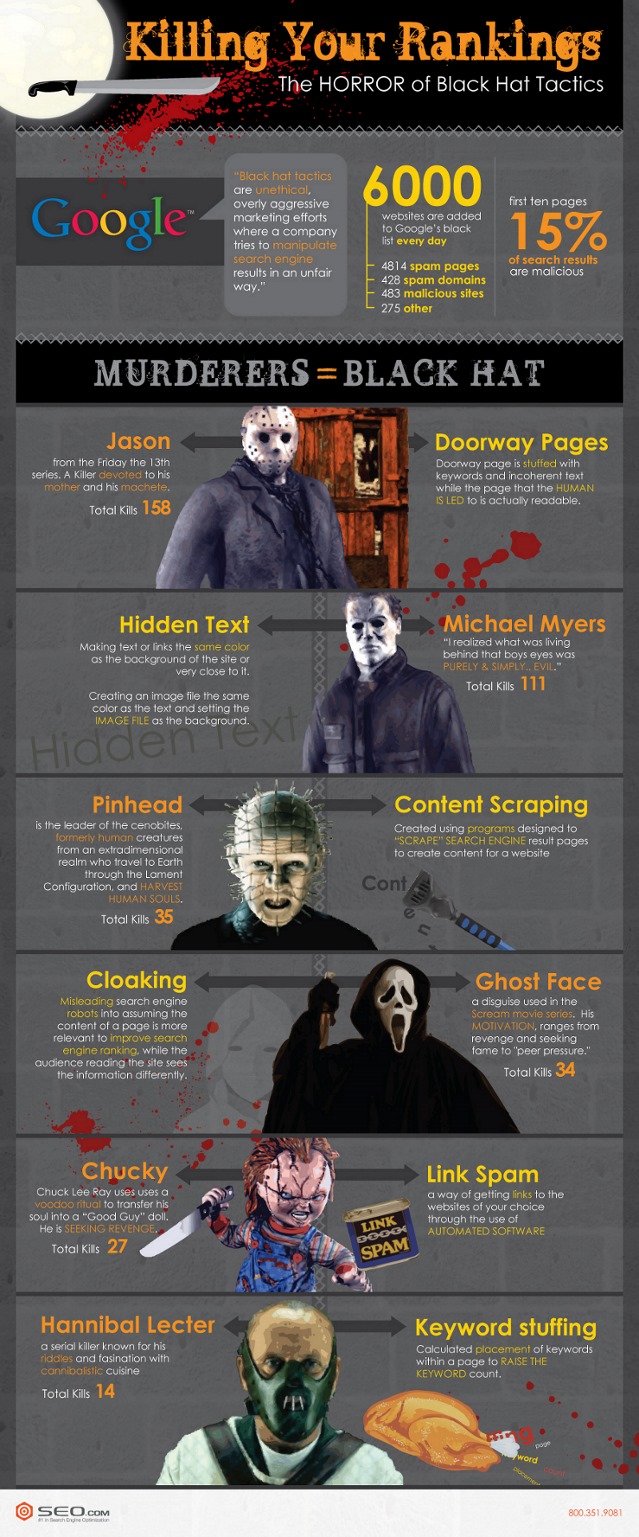
Halloween is near. Scary things crawl out of their dark holes to celebrate and feed. Some of them may already have found their way into your site… and when midnight comes, they will gnaw at your rankings, suck your link juice, then dump your site’s cold, shriveled body on page 2 of Google!
That’s what happens when you practice black magic. Or, in SEO terms, when you dabble in black hat SEO practices. Demons hear your call and gleefully answer it, drawn to the scent of a sinning webmaster. For the “meager” price of making your website their home, they promise you high rankings, lots of visitors and a spike of traffic – and then take it all away. Sometimes demons drag the website itself to the abyss, too.
But there is a ray of hope. The best way to not get caught by these hellspawns is to know what dwells inside the darkness of black hat SEO. Know the demons and the tricks they use before their teeth bite through your career’s throat. To safeguard your website from these black hat practices and monitor your SEO integrity, consider using WebCEO’s Website Audit tool.
(Spoiler alert: Google kills them all and then burns you at the stake in the end.)
1. Doorway pages have only one purpose: to lure you in. They are designed to rank well in search results, that’s how they get you. You click on them only to find yourself on a page filled with keywords and incoherent nonsense… then the trap springs, and you are redirected to somewhere else.
2. Hidden texts and links, which are parasites unseen to the eye. They are the lesser and the weakest of the horrors, their tiny hungry mouths desperate to suck in some undeserved traffic.
3. Keyword stuffing. When a site puts on a black hat, its keywords breed uncontrollably, trying to trick search engines with their numbers.
4. Content scraping, wearing the face of another. One may simply try to appear as somebody else – somebody you love and desire – to tempt you, and when they wickedly steal pieces of content from too many others, the site turns into a monstrous chimera.
5. Cloaking, another art of deceiving appearances. Some websites have a face of unparalleled beauty, which they show to search engines. But on the back of their heads, they have a second face, hideous and disfigured, which they show you when you are drawn in.
6. Link spam is another name for when a black hat wearing website spreads its tendrils chaotically. Sites need backlinks to rank high in SERPs. Sometimes they turn into beasts, latch onto other sites uninvited, drink their domain authority and try to catch unsuspecting users when they can.
They lurk in dark corners, eager to jump on your defenseless back, dig their claws in your face and your neck. Remember: a black hat will bring misfortune to sites that wear it. Monsters who feed on traffic and rankings are drawn to the black hat. Don’t let them murder your SEO!
(Source of the infographic: SEO.com)



